There’s a lot to catch up on here, so I’ll get right into it.
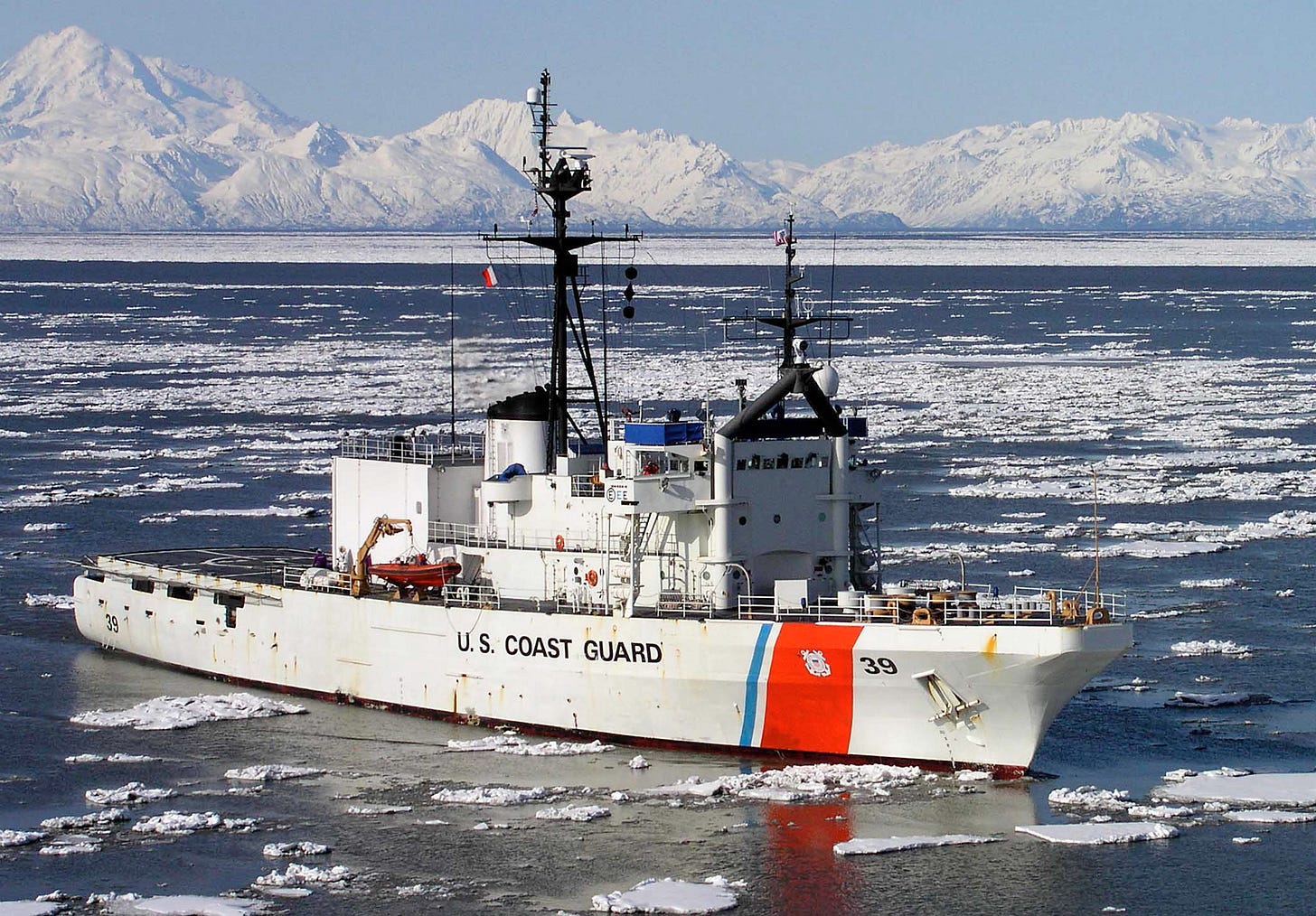
Alaska homeported cutter earns cutter of the year award
From a U.S. Coast Guard press release:
For the second year in a row, Alex Haley earned the medium cutter of year award across the entire Coast Guard fleet. The Hopley Yeaton Cutter Excellence Award recognizes the ship that demonstrated exceptional performance across operations and mission accomplishment, commitment to crew and families, training and readiness, and engineering.
Spending nearly 200 days deployed in support of Coast Guard Pacific Area and District 17, Alex Haley embodied the proud tradition of the Bering Sea cutter, sailing from the Arctic Ocean to the furthest reaches of the Bering Sea and Aleutian Islands. Leading all cutters in Bering Sea and Aleutian Island living marine resource law enforcement boardings to protect and help sustain Alaska fisheries, the ship also supported strategic United States Government priorities including intercepting and escorting a Russian warship across the Aleutian Islands. Most notably, the cutter and crew earned a Letter of Commendation from the International Maritime Organization for bravery saving eight mariners in distress while towing a fishing vessel 32 hours to safe harbor during a winter gale.
According to her U.S. Coast Guard webpage:
A former Navy rescue and salvage ship, ALEX HALEY is uniquely suited for a wide array of missions in “The Final Frontier” of Alaska. As the only major cutter homeported in Alaska, ALEX HALEY’s primarily missions are search and rescue, international/domestic fisheries enforcement, and homeland defense. The crew of ALEX HALEY has operated throughout the Bering Sea and Aleutian Islands, into the western Pacific and Sea of Japan, and north into the Arctic Circle. Since receiving the cutter from the Navy in 1999, the Coast Guard has made numerous upgrades and enhancements to ensure the cutter’s mission readiness in one of the most demanding operating environments – the Bering Sea. As the largest Medium Endurance Cutter in the Coast Guard’s fleet, ALEX HALEY boasts a very unique engineering plant and stable design that enables it to ride well in heavy seas like those featured on shows such as “Deadliest Catch.”
Well done!
Polar Star Returns from Operation Deep Freeze, Begins Maintenance Period
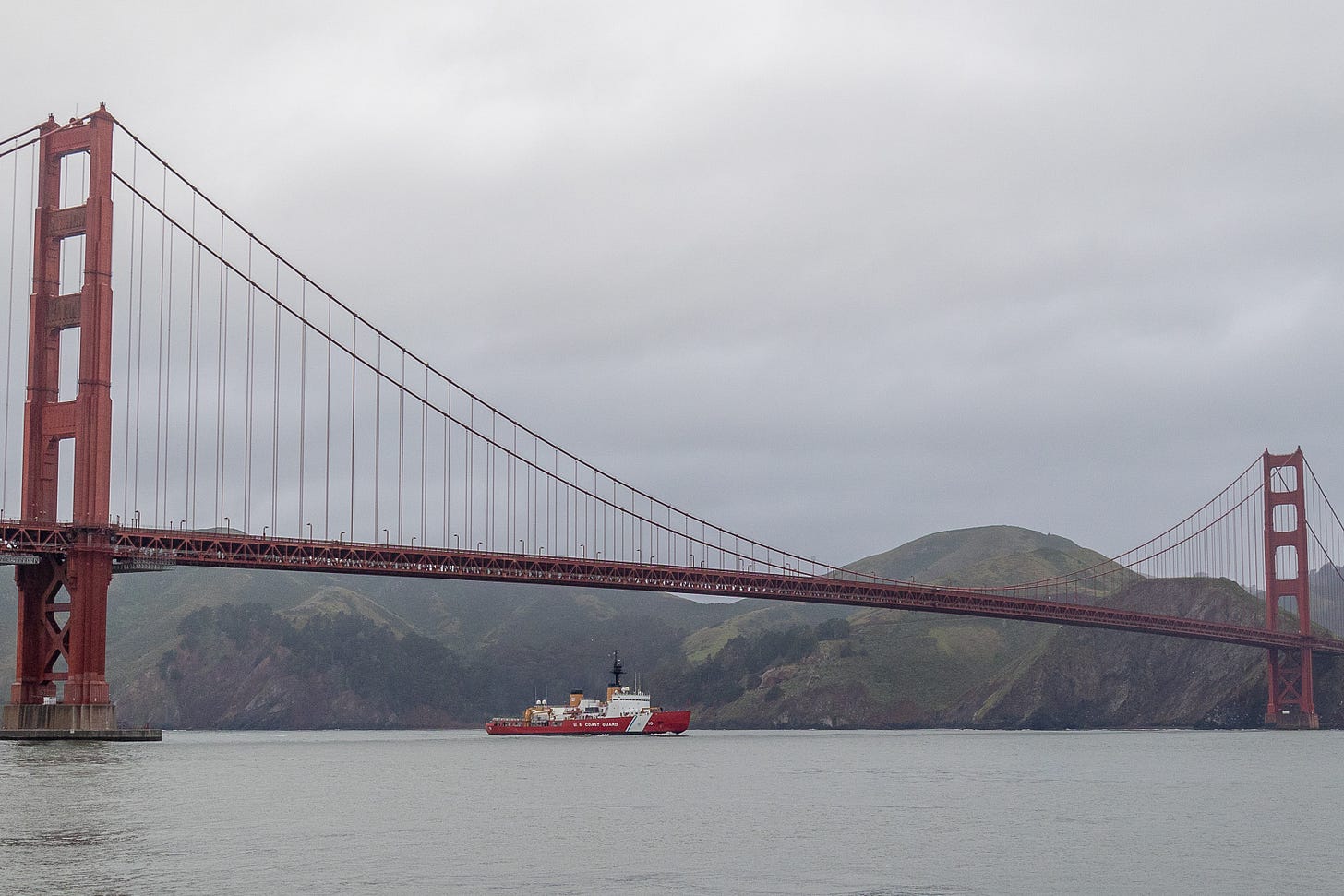
Polar Star returned from her 128-day mission in support of Operation Deep Freeze 2025 on March 30, 2025. According to a U.S. Coast Guard press release:
In Antarctica, the cutter encountered 14 miles of fast ice up to six feet thick. Polar Star created a navigable route and cleared Winter Quarters Bay for two cargo vessels and HMNZS Aotearoa to reach NSF McMurdo Station.
Polar Star provides heavy icebreaking capabilities to facilitate sealift, seaport access, bulk fuel supply, and cargo handling for two of three permanent U.S. research stations in Antarctica, with NSF McMurdo Station being the largest. The cutter’s icebreaking capabilities enable the safe delivery of critical supplies to sustain USAP’s year-round operations and support international partnerships in the harsh Antarctic environment. It is vitally important that the U.S. maintains a maritime domain presence in Antarctica to protect international access to the region, in line with the Antarctic Treaty System.
Polar Star did not return to her homeport of Seattle, Washington. Instead, she immediately entered Mare Island Dry Dock for the fifth and final phase of a service life extension program (SLEP). Polar Star is well beyond her planned 30-year service life, and the SLEP is designed to keep her in operation until the second Polar Security Cutter (PSC) is delivered. When the SLEP first began in 2021, the second PSC was due in 2026. Based on the current advertised schedule, Polar Star will have to hold out until at least 2032.
The SLEP must be hard on the crew, as it means spending significant amounts of time away from homeport. For example, consider 2024 in which Polar Star returned to Seattle (following phase four of the SLEP) on August 25th, then departed for Operation Deep Freeze less than three months later (on November 22).
Based on the size of available drydocks, it looks like the same pattern will be followed for Healy’s planned SLEP and future PSC maintenance (should they ever actually be built.) As Chuck Hill notes on his blog:
Healy, like Polar Star, is based in Seattle, but Polar Star’s five year rolling Service Life Extension Program was not done in Seattle, it was done in Vallejo, CA. Vallejo is 776 miles from Seattle. These five phased Yard periods were extremely long, so the ship spent about half its down time far from home. I know they tried to mitigate the effect on the crew, but it had to be bad for crewmembers whose families were in Seattle.
I can’t help but think it would have been a good idea to change Polar Star’s homeport to Vallejo or Alameda (water depth at the Support Center permitting). Vallejo is a lower priced area than Seattle and there is property there from the old Navy shipyard that the city is still trying to develop. Pretty sure the city would be happy to have Healy homeported there.
Polar Security Cutter Program Updates
Bollinger awarded more money for first PSC
Back in March, U.S. Naval Institute News reported:
A Mississippi shipyard has been awarded a $951.6 million contract to adjust for cost increases for the first Polar Security Cutter, USNI News has learned.
Bollinger Mississippi Shipbuilding won the contract modification from Naval Sea Systems Command in partnership with the Coast Guard to account for cost and schedule increases for the first Polar Security Cutter — the future USCGC Polar Sentinel —that is set to be built at the company’s Pascagoula shipyard, a Coast Guard spokesperson told USNI News Thursday.
If you’re keeping track, the contract to build the first PSC was awarded in April of 2019. According to that initial $745.9 million fixed-price contract, construction was scheduled to begin in 2021 with delivery in 2024, with incentives for a 2023 delivery.
In 2021, the cost estimate was revised up to about $1.3 billion for the first PSC.
In 2024, the Congressional Budget Office issued its own cost estimate, placing the cost of the first PSC at about $1.9 billion.
The last official delivery date I’ve heard is still 2030 for the first PSC, with the second vessel in 2032 and the third in 2034.
Coast Guard to Begin Full Production Activities for Polar Security Cutter
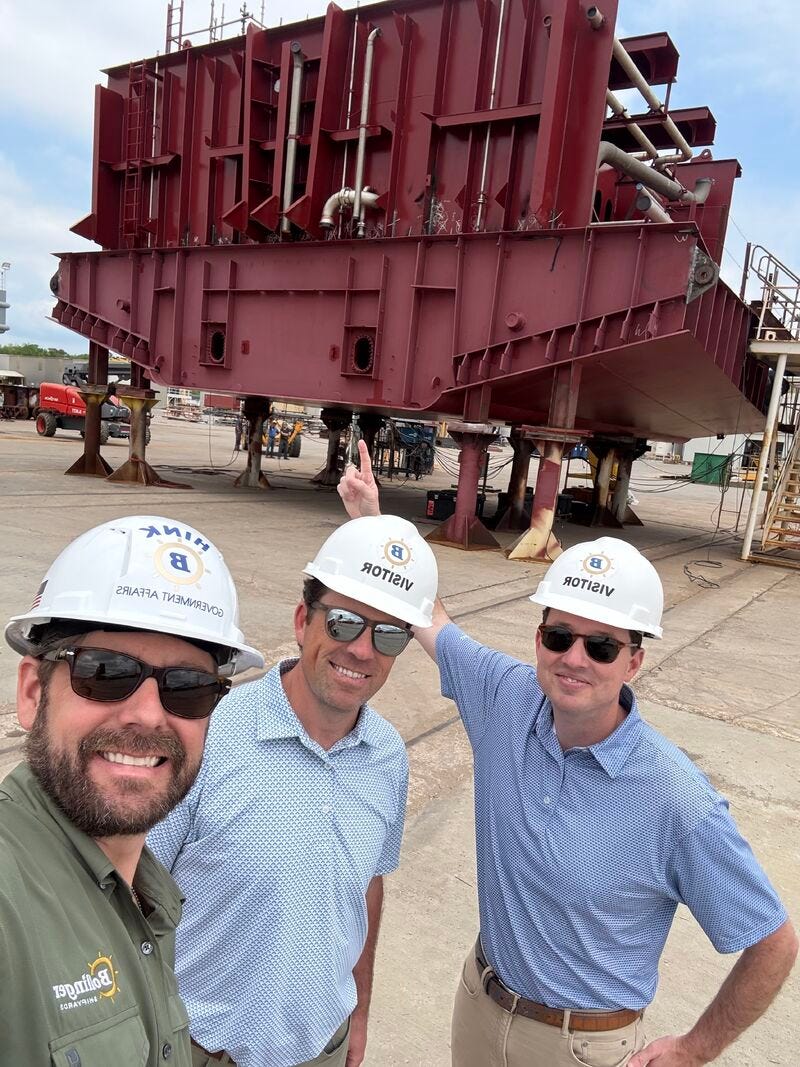
From a May 1, 2025, U.S. Coast Guard Press Release:
The Department of Homeland Security approved full production of the first U.S. Coast Guard Polar Security Cutter (PSC), April 30, 2025. The Service also received approval for low-rate initial production of the the Waterways Commerce Cutter (WCC). This is a significant milestone for the Nation, as it brings the Coast Guard closer to renewing and enhancing operational capabilities in both the American heartland and the polar regions.
Approval for full production enables the Coast Guard and U.S. Navy integrated program office to maintain production momentum, and for the shipbuilder to accelerate hiring to deliver this critical asset as quickly as possible to support national security initiatives.
Some of you may be confused, believing that such permission was already granted in December. As I wrote back in January:
In a widely expected announcement, the U.S. Coast Guard met its commitment to begin construction of the first of its planned three Polar Security Cutters before the end of 2024. This approval allows Bollinger to incorporate eight prototype modules to be used in the vessel itself, meaning that the U.S. Coast Guard can now claim to actually be building one of these long-delayed vessels.
The details matters- the December approval only allowed Bollinger to incorporate the eight prototype units (built or planned) into the vessel, not to begin building other components. It would be good to know how much progress has been made on those eight prototype units. The most recent figures I have seen are from December 2024, via Craig Hooper at Forbes:
As of December 2024, six of eight “Prototype Fabrication Assessment” modules have been authorized, and are in various states of production, “ranging from 5% to 75% complete.”
Ordered Review of Procurement Programs
The April 9th, 2025 Executive Order ‘Restoring America’s Maritime Dominance” includes a few sections related to icebreaking and procurement (bold is mine):
Sec. 15. Improve Procurement Efficiency. Within 90 days of the date of this order, the Secretary of Defense, the Secretary of Commerce, the Secretary of Transportation, the Secretary of Homeland Security, and the Director of the National Science Foundation shall develop a proposal for improved acquisition strategies processes for United States Government vessels and submit such proposal to APNSA and the OMB Director for inclusion in the MAP….
Sec. 16. Improve Government Efficiency. Within 90 days of the date of this order, the Department of Government Efficiency shall begin a separate review of the Department of Defense and Department of Homeland Security vessel procurement processes and deliver a proposal to the President, through the APNSA for inclusion in the MAP, to improve the efficiency and effectiveness of these processes….
Sec. 18. Ensure the Security and Leadership of Arctic Waterways. Within 90 days of the date of this order, the Secretary of Defense, in consultation with the Secretary of Transportation, the Secretary of Homeland Security, and the Commandant of the Coast Guard shall develop a strategy that identifies the vision, goals, and objectives necessary to secure arctic waterways and enable American prosperity in the face of evolving arctic security challenges and associated risks, and deliver it to the APNSA for inclusion in the MAP.
Sec. 19. Shipbuilding Review. Within 45 days of the date of this order, the Secretary of Defense, the Secretary of Commerce, the Secretary of Transportation, and the Secretary of Homeland Security shall conduct a review of shipbuilding for United States Government use and submit a report to the President with recommendations to increase the number of participants and competitors within United States shipbuilding, and to reduce cost overruns and production delays for surface, subsurface, and unmanned programs. This report must include separate itemized and prioritized lists of recommendations for the United States Army, Navy, and Coast Guard and shall be included in the MAP.
And a portion of another Executive Order issued on the same day, titled “Modernizing Defense Acquisitions and Spurring Innovation in the Defense Industrial Base” includes this section, which will take aim at the PSC program (bold is mine):
Sec. 6. Major Defense Acquisition Program Review. (a) Within 90 days of the date of this order, the Secretary of Defense, acting through the Deputy Secretary of Defense, in coordination with the Secretary of the Army, the Secretary of the Navy, the Secretary of the Air Force, the Under Secretary of Defense for Acquisition and Sustainment, and Component Acquisition Executives, shall complete a comprehensive review of all major defense acquisition programs (MDAPs), as defined in section 4201 of title 10, United States Code, to determine if any such programs are inconsistent with the policy objectives set forth in section 2 of this order.
As part of the review of all MDAPs:
(i) any program more than 15 percent behind schedule based on the current Acquisition Program Baseline (APB), 15 percent over cost based on the current APB, unable to meet any key performance parameters, or unaligned with the Secretary of Defense’s mission priorities, will be considered for potential cancellation. The Secretary of Defense shall submit the potential cancellation list to the Director of the Office of Management and Budget (OMB) for future budget determinations.
(ii) the Secretary of Defense shall provide a listing of all MDAPs contracts, along with performance against original and approved Government cost estimates to the Director of OMB for review within 90 days from the date of this order.
(b) Following this comprehensive review of MDAPs, the Secretary of Defense shall provide the Director of OMB with a plan for reviewing all remaining major systems, as defined in section 3041 of title 10, United States Code, that are not MDAPs.
Although the Polar Security Cutter is a U.S. Coast Guard program, the contract award is listed on the DoD webpage here. Note that the contract is being managed by the Naval Sea Systems Command (N-00024-19-C-2210) meaning that by my reading it is a major defense acquisition program under Title 10 Section 4201. Then again, I’m not a lawyer. I could be wrong.
Bottom line: We should see proposals for acquisition reform coming from both the Cabinet Secretaries and the Department of Government Efficiency, and the Polar Security Cutter program will be going under a tight review that may impact future procurement decisions, even if political reasons prevent its outright cancellation.
Arctic Security Cutter Update
The Arctic Security Cutter- the U.S. Coast Guard’s planned ‘medium’ polar icebreaker- came into the news on April 11th, with the issuance of a Request for Information. I covered the RFI itself here:
I’ve been hearing about the Arctic Security Cutter for years, but this was the first time that I’ve seen any action taken about the vessel. With both Congress1 and President Trump pushing for more icebreakers2, I can expect we will be hearing more about this program.
As the RFI included foreign shipyards and instituted a ‘be able to build in 36 month’ requirement, it attracted quite a bit of attention here in Finland.3 Here are a couple of examples (in Finnish, headlines translated via MS Bing):
Analysis/ Trump's super-fast wish for icebreakers may tip in Rauma's favor for this reason (I’m quoted in this one, but behind a paywall)
I may discuss existing designs that meet the RFI’s specifications at some point. There are quite a variety, which points to a weakness in the process: The RFI does not say what kind of missions the icebreaker will need to accomplish. Icebreaker design involves trade-offs, so understanding the icebreaker’s planned usage is quite important4.
Potential Deal with Finland?
In mid-April, Finland’s largest newspaper ran a story based on three sources stating that a Finnish shipyard was in negotiations to build up to eight icebreakers- five ‘medium’ for around 2.5 Billion Euro, and thee ‘heavy.’
It is still unclear whether the story refers to the Artic Security Cutter RFI, or some other process. An article in Kauppalehti (the one above that is behind a paywall) implies that it was just a different interpretation of the RFI, but there has been no clarification by Helsingin Sanomat (which broke the initial story).
Another RFI- For Domestic Icebreakers
On May 1st, the U.S. Coast Guard issued a Request for Information (RFI) concerning domestic icebreakers. Like the Arctic Security Cutter RFI, it includes foreign shipyards and a tight timeline for delivery- within 24 months for these icebreakers. Here are the initial specifications for the Domestic Icebreaking Medium (DOMICE-M) and Light (DOMICE-L) vessels:
The RFI asks for rough costs to build up to seven DOMICE-L and eleven DOMICE-M vessels. Submissions are due May 22.
More Funding for New Ships- Maybe
According to a story in USNI News:
The Coast Guard could see $14.6 billion in new cutters as part of a massive supplemental that could almost double the service’s Fiscal Year 2025 budget, according to the text of the reconciliation bill reviewed by USNI News.
Included in the Republican-led funding proposal is money for almost 30 new cutters ranging in size from the 154-foot Sentinel-class Fast Response Cutter to the 460-foot Polar Security Cutter, according to a source familiar with the proposed buy.
Those include:
Three or more Arctic Security Cutters and an unspecified number of Great Lakes icebreakers for $5.03 billion.
Two Polar Security Cutters and advanced procurement for $4.3 billion.
Eight Heritage-class Offshore Patrol Cutters for $4.3 billion.
Up to 15 Sentinel-class Fast Response Cutters for $1 billion.
As Chuck Hill notes in this blog entry, the bill is conditional- it does not directly appropriate the money, but instead allows money to be spent, if available:
The bill provides a long list of things money could be spent on, totaling $14.6B according to the USNI report. It does not directly fund them. It allows any FY2025 money not otherwise committed, to be moved into a pool the Coast Guard can draw on for the next four years.
The Coast Guard is not the only agency that can draw on “any money in the Treasury not otherwise appropriated,” This bill “appropriates” $15B for the FAA and about $257M to the Kennedy center under the same conditions. There is also nearly identical wording in the Defense Reconciliation bill but for much larger sums.
I’ll be following the reconciliation bill and budget discussions to see how all of this plays out with interest. It is worth noting that the draft bill has a section indicating the process to be followed should President Trump waive the Title 14 requirement that “no Coast Guard vessel, and no major component of the hull or superstructure of a Coast Guard vessel, may be constructed in a foreign shipyard.” For more on the build in the U.S. requirements associated with the U.S. Coast Guard, see here:
(and please note that the Jones Act applies to neither U.S. Government vessels nor icebreakers in general)
Thoughts and Comments
The U.S. Coast Guard’s lack of icebreaking capability is not just a strategic problem, but one that affects the lives of the good men and women tasked to keep them in operation.
With that in mind, I’d like to start by highlighting the good work that the crews of the U.S. Coast Guard cutters are doing in icy waters. This does not apply only to the Polar Star and Healy; Alaska based Alex Haley and other rotational deployers are doing their very best to conduct the U.S. Coast Guard’s required missions in the absence of icebreakers. In the case of Polar Star, this has involved crew members being away from their home port for about nine months out of every year for the past five years. And it is that crew that keeps the aging “Polar Roller” in action while we wait for the promised fleet recapitalization to occur.
When it comes to the Polar Security Cutter, I remain skeptical. Based on the press releases, it seems that progress is being made. But we’ve heard very little other than positive spin for the past five years. The Executive Order should shine a bright light on the failures of this project and may result in changes to the U.S. Coast Guard’s acquisition strategy even if it proves politically impossible to cancel the program.
I think just about everyone agrees that U.S. Government procurement is broken. Later in the year we should have both a government proposal to improve acquisition strategy and an outside report on the matter from the Department of Government Efficiency. This is a necessary step in getting out of our own way.
The U.S. Coast Guard RFIs and proposed supplemental funding bill seem like the early signs of a push to start acquiring icebreakers (and other vessels) in a timeline that matters. I’ll believe it, though, when the funds start flowing.
For those of you who are concerned about the U.S. maritime industrial base, I’m working on an article that will show the magnitude of the shipbuilding problem. If, as has been stated, we are planning on taking steps to restore the maritime industrial base that include building more commercial vessels and more warships for the Navy, there will be plenty of work to go around.
There was a lot of ground to cover in this one- but that’s because it’s been a busy few months when it comes to U.S. Coast Guard icebreaking news.
Coming next, in no particular order: European (or global) icebreaker update, a look at the U.S. maritime industrial base (and why building icebreakers overseas makes sense), and an update on the impact that Sixty Degrees North has been having with regard to icebreaking.
With so much happening, now is the second-best time to subscribe (the best time was a year ago) to make sure that you never miss an update. ‘Like’ this post to tell me that you want more just like it. And be sure to spread the word.
All the Best,
PGR
Congress inserted language into the National Defense Authorization Act for FY 2023 (passed in December 2022) that essentially required the establishment of the Arctic Security Program Office:
(e) Establishment of the Arctic Security Cutter Program Office.-
"(1) Determination.-Not later than 90 days after the submission of the report under subsection (a), the Commandant shall determine if constructing additional Polar Security Cutters is more cost effective and efficient than constructing 3 Arctic Security Cutters.
"(2) Establishment.-If the Commandant determines under paragraph (1) that it is more cost effective to build 3 Arctic Security Cutters than to build additional Polar Security Cutters or if the Commandant fails to make a determination under paragraph (1) by June 1, 2024, the Commandant shall establish a program office for the acquisition of the Arctic Security Cutter not later than January 1, 2025.
"(3) Requirements and design phase.-Not later than 270 days after the date on which the Commandant establishes a program office under paragraph (2), the Commandant shall complete the evaluation of requirements for the Arctic Security Cutter and initiate the design phase of the Arctic Security Cutter vessel class.
Because as I noted below, Finland can design and build icebreakers within 36 months:
A good example of this can be seen when the U.S. Coast Guard’s ‘medium’ icebreaker Healy was tasked with escorting a tanker into Nome, Alaska back in 2012. While excellent for patrolling and conducting research, Healy had difficulty breaking ice for another vessel, sometimes progressing only a few miles each day. See CGC Healy’s Emergency Trip to Nome Raises Questions About the U.S. Icebreaker Fleet for more details.






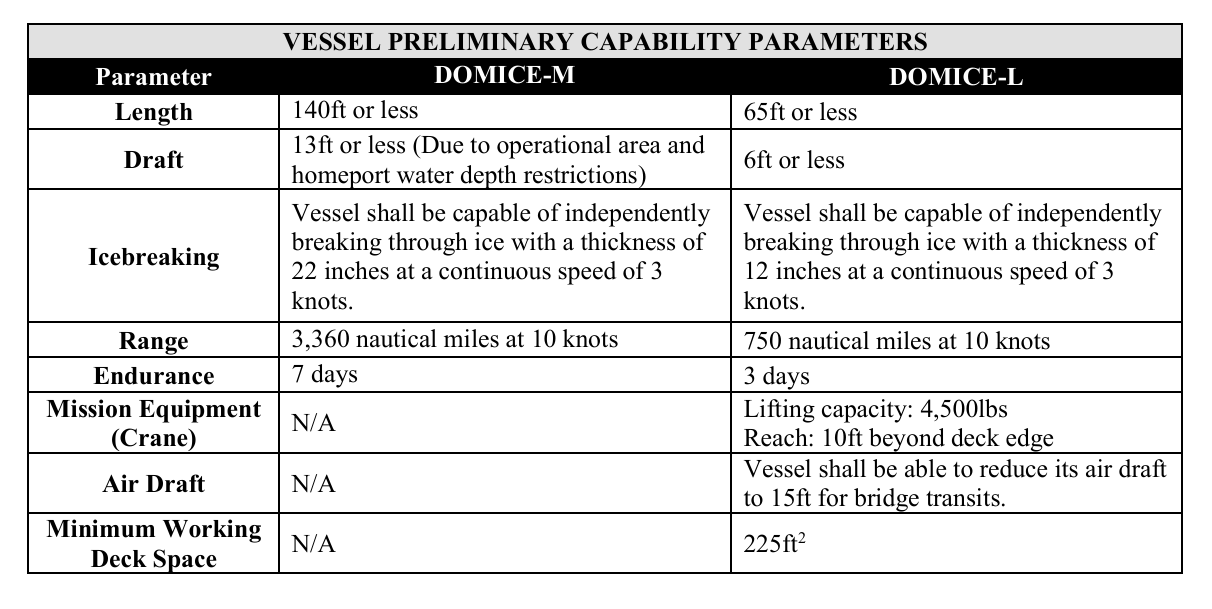


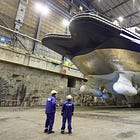
Great insight! Much appreciated. This fills a nice gap in information depending on if you're located in Finland or the US currently.